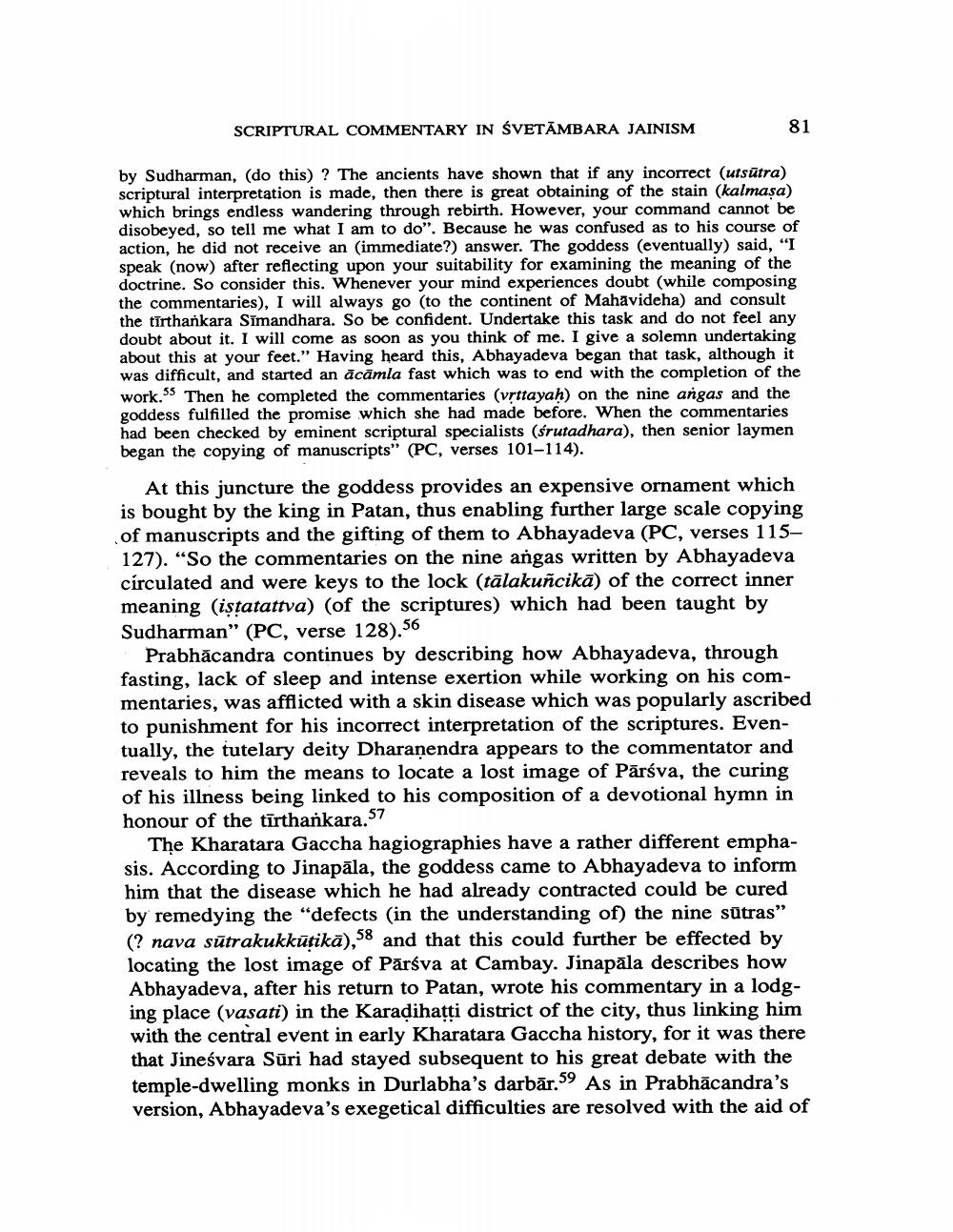________________
SCRIPTURAL COMMENTARY IN ŚVETĀMBARA JAINISM
81
by Sudharman, (do this)? The ancients have shown that if any incorrect (utsutra) scriptural interpretation is made, then there is great obtaining of the stain (kalmasa) which brings endless wandering through rebirth. However, your command cannot be disobeyed, so tell me what I am to do". Because he was confused as to his course of action, he did not receive an immediate?) answer. The goddess (eventually) said, “I speak (now) after reflecting upon your suitability for examining the meaning of the doctrine. So consider this. Whenever your mind experiences doubt (while composing the commentaries), I will always go to the continent of Mahavideha) and consult the tīrthankara Sīmandhara. So be confident. Undertake this task and do not feel any doubt about it. I will come as soon as you think of me. I give a solemn undertaking about this at your feet." Having heard this, Abhayadeva began that task, although it was difficult, and started an ācāmla fast which was to end with the completion of the work.55 Then he completed the commentaries (vrttayah) on the nine angas and the goddess fulfilled the promise which she had made before. When the commentaries had been checked by eminent scriptural specialists (śrutadhara), then senior laymen began the copying of manuscripts" (PC, verses 101-114).
At this juncture the goddess provides an expensive ornament which is bought by the king in Patan, thus enabling further large scale copying of manuscripts and the gifting of them to Abhayadeva (PC, verses 115– 127). "So the commentaries on the nine angas written by Abhayadeva círculated and were keys to the lock (tālakuñcikā) of the correct inner meaning (istatattva) (of the scriptures) which had been taught by Sudharman" (PC, verse 128).56
Prabhācandra continues by describing how Abhayadeva, through fasting, lack of sleep and intense exertion while working on his commentaries, was afflicted with a skin disease which was popularly ascribed to punishment for his incorrect interpretation of the scriptures. Eventually, the tutelary deity Dharanendra appears to the commentator and reveals to him the means to locate a lost image of Pārsva, the curing of his illness being linked to his composition of a devotional hymn in honour of the tīrthankara.57
The Kharatara Gaccha hagiographies have a rather different emphasis. According to Jinapāla, the goddess came to Abhayadeva to inform him that the disease which he had already contracted could be cured by remedying the “defects in the understanding of) the nine sütras” (? nava sūtrakukkūtikā),58 and that this could further be effected by locating the lost image of Pārśva at Cambay. Jinapāla describes how Abhayadeva, after his return to Patan, wrote his commentary in a lodging place (vasati) in the Karadihatti district of the city, thus linking him with the central event in early Kharatara Gaccha history, for it was there that Jineśvara Sūri had stayed subsequent to his great debate with the temple-dwelling monks in Durlabha's darbār.59 As in Prabhäcandra's version, Abhayadeva's exegetical difficulties are resolved with the aid of




